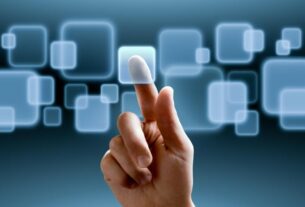The National Library of Medicine (NLM) in the United States has published a report that assesses the most important technologies in the development of eHealth.
The document, entitled “The Technological Growth in eHealth Services”, is signed by Shilpa Srivastava (Raj Kumar Goel Institute of Technology), Millie Pan (Indian Institute of Technology Roorkee), Ajith Abraham (Universidad de Ostrava) and Namrata Agrawal (National Institute of Financial Management).
“In recent years, the integration of different media into a single system has revolutionized healthcare services,” the text states. According to the group led by Srivastava, the implementation of ICTs in the healthcare sector is emerging as one of the fastest growth areas in healthcare.
“Technological innovations present new applications for sharing healthcare information with different audiences using an innovative, interoperable design,” the authors state. In fact, according to the study, the industry makes use mainly of four forms of communication. These four forms are in turn the most influential technologies in the field of eHealth: satellites, internet, mobility and the cloud.
Satellites
Satellite communication is an effective and accessible solution in developing countries where the population often has trouble accessing basic healthcare systems due to factors such as distance, poverty and a lack of professionals.
“In the field of eHealth, satellite communication, combined with information technologies, plays a vital and meaningful role,” says the text, noting the benefits that satellites provide to healthcare services in remote and inaccessible areas such as rural and tribal zones.
A system with satellite technology can offer services such as:
• Real-time tele-monitoring via imaging and ultrasound equipment.
• Collection and transmission of medical readings – such as glucose, heartbeat and weight.
• Remote monitoring of endemics, epidemics and natural disasters.
• Remote interactions between citizens, professionals, hospitals and remote medical centers.
Internet
“The Internet has become a cheap and effective way of promoting health. It could empower citizens in both urban and rural areas to take better, more informed, decisions about their healthcare,” said the authors.
The functions made possible by the Internet include:
• Diagnoses of disease in remote areas.
• Medical education and training of professionals.
• Treatment of general and chronic diseases.
• Services for elderly people.
Mobile Communication
“The best way to gather data and analyze, record and monitor patients is via medical services on mobile phones,” the text says. In recent years, this technology has been used effectively to provide medical support to remote patients.
Some of the most frequent and functional uses of mobile technology are:
• Gathering of clinical data.
• Delivery of medical information to professionals.
• Tele-monitoring of vital signs in real-time.
The Cloud
“The great advantage of using informatics systems in the cloud is the infinite availability of resources,” the study says. This technology offers numerous opportunities to improve healthcare services from an administrative and innovative point of view, allowing different services, files and applications to share information.
For example, the text states that digital health records should be created and stored in the cloud. This way, healthcare professionals can have access to valuable data about treatments and diseases for analytical studies.
Although the report indicates that this resource still hasn’t reached its full potential, the authors state that the cloud is increasingly becoming an emerging area of research within eHealth.



